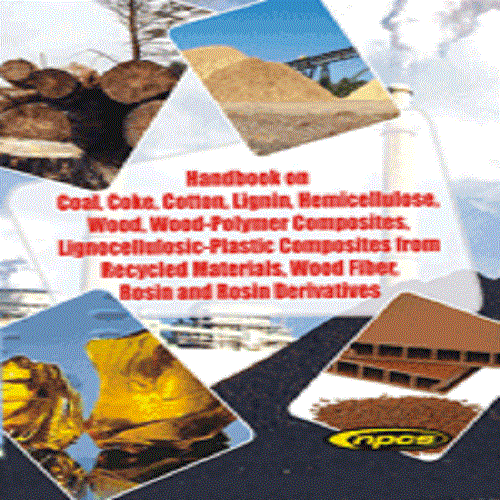Call us: 08042307456
The Complete Technology Book on Wood and Its Derivatives

Product Description
Wood has been used for hundreds of thousands of years for both fuel and as a construction material. Wood is an organic material, a natural composite of cellulose fibers (which are strong in tension) embedded in a matrix of lignin which resists compression. In the strict sense wood is produced as secondary xylem in the stems of trees (and other woody plants). Wood is used for millennia for many purposes, primarily as a fuel or as a construction material for making houses, tools, weapons, furniture, packaging, artworks, and paper. Wood is composed of cells, and the cell walls are composed of micro fibrils of cellulose and hemicellulose impregnated with lignin. The derivation of chemicals from wood is carried out wherever technical utility and economic conditions have combined to make it feasible. In a living tree it performs a support function, enabling woody plants to grow large or to stand up for themselves. It also mediates the transfer of water and nutrients to the leaves and other growing tissues. Wood may also refer to other plant materials with comparable properties, and to material engineered from wood, or wood chips or fiber. Wood and man have coexisted on this planet from the beginning and wood, as a renewable resource, has provided man with tools, weapons and shelter. Wood, when dry, has unique physical properties in that its tensile strength, bending strength, compression strength, impact resistance and hardness per unit weight are the highest of all construction materials. Wood polymer composites (WPC) are materials in which wood is impregnated with monomers that are then polymerized in the wood to tailor the material for special applications. The resulting properties of these materials, from lightness and enhanced mechanical properties to greater sustainability, has meant a growing number of applications in such areas as building, construction and automotive engineering. Other uses of wood in furniture, buildings, bridges, and as a source of energy are widely known. Wood is perhaps the most used component in our daily life, from home building and furnishings to everything from the tables to the doors are made of wood, and for the people living in colder climates, wood holds even greater importance.
Some of the fundamentals of the book are wood structure and chemical composition, chemical change in wood associated with wood fiberboard manufacture, chemical changes in wood effected by furnish preparation processes, bark extracts as bonding agent for particle board , wood polymer composites and their industrial applications , chemical reactions of preservatives with wood, activation of wood surface and nonconventional bonding , chemistry of weathering and protection , weathering of chemically modified woods, energy and chemicals from wood, charcoal and other chemicals, etc.
The developments in wood industry in the country are mainly attributed to the pioneering work carried in the field of wooden products. There are lots of chemicals and other products extracted from wood. This book contains processes of various wooden products and its derivatives. This is the first book of its kind which is invaluable resource to research scholars, entrepreneurs, technocrats, institutes, libraries and existing one.
 English
English Spanish
Spanish French
French German
German Italian
Italian Chinese (Simplified)
Chinese (Simplified) Japanese
Japanese Korean
Korean Arabic
Arabic Portuguese
Portuguese



